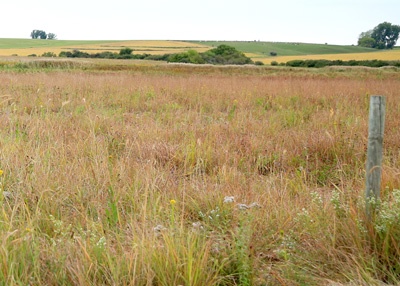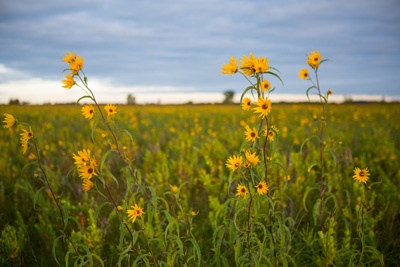Delivering Our Future
I’ve enjoyed taking time over the last year to celebrate the two decades’ worth of accomplishments that you’ve made possible through your support and partnership. Over that time, we have built a uniquely effective organization designed to turn Minnesota’s shared value of love for our Great Outdoors into the public support, political leadership, and policy solutions that will ensure a sustainable future. I am continually inspired by Minnesotans’ eagerness to come together to stand up for our lakes, our lands, and the health of our communities.
This November, in an election where many focused on division, Minnesotans came together to overwhelmingly approve a constitutional amendment to rededicate state lottery funds for our Great Outdoors. The amendment won with 77.5%, the most votes in state history, securing clear majorities in every region, county, and district. It will provide critical funding for the next 25 years.
Managing this constitutional amendment campaign on behalf of over 150 conservation, tourism, business, and community organizations affirmed our belief in finding common ground. It also gave us an excellent opportunity to continue to listen to people throughout our state. What we heard in every region and background is a shared belief that we all deserve clean water to drink, clean air to breathe, lakes and natural areas to enjoy, and healthy, prosperous communities to live in. We are excited to start sharing ways to move forward and deliver the future every Minnesotan deserves.
—Paul Austin, Executive Director
———
Every Minnesotan Deserves Clean Water to Drink
In the Land of 10,000 Lakes, one would think that every Minnesotan would have access to clean water for drinking and recreation—but that's not always the case. We’re setting goals and working to deliver the future every Minnesotan deserves. We hope you’ll join us in advancing this work to guarantee clean water for everyone who calls our state home.
Replacing Lead Water Pipes

Lead can cause developmental delays and damage the brain, kidneys, and nervous system. Yet, according to state agencies, about 100,000 lead water lines enter homes in communities across the state, such as Pipestone and Duluth. Last year, state legislators passed a law to remove all lead pipes by 2033 and dedicated $240 million to inventory and replace the lines to meet the deadline.
The Minnesota Department of Health estimates that completing the work outlined in the 2023 law will cost $1 billion. Local communities or individual homeowners often can’t afford to pay for replacements, so state and federal grants are necessary to remove all lead service lines. We’ll continue advocating for this funding to ensure Minnesota meets our 2033 goal and that the next generation isn’t exposed to dangerous lead contamination.
Restoring Our Wetlands

Wetlands do more than provide habitat for birds and other wildlife. They help improve water quality and minimize the impacts of flooding and drought. Over 60% of Minnesota’s wetlands have already been destroyed, and extreme weather patterns are putting increased pressure on the remaining wetlands.
Minnesota currently operates under a no-net-loss of wetlands policy—but there is evidence that despite the current legal framework, wetland loss has continued over the last decade or two.
We’ll work to not only protect our remaining wetlands, but restore the degraded wetland systems that clean our water and prevent flooding. Increasing wetland resiliency statewide will require funding, and we will advocate for the state to set a wetland restoration goal to help guide this work.
Keeping Toxic PFAS Out of Drinking Water
Harmful PFAS, or forever chemicals, have infiltrated our drinking water, lakes, fish, and wildlife. Because PFAS are bio-accumulative and highly persistent, they present significant health risks. Twenty-two communities across Minnesota have drinking water above the federal PFAS limit.
In 2023, Minnesota passed a nation-leading ban on PFAS. As the state implements the ban, we expect the legislature will face tremendous corporate and political pressure to provide exemptions or lax enforcement. We’re committed to defending the strictest interpretation and implementation of the law to protect the health of our communities and environment.
Protecting the Natural Landscapes That Source Our Drinking Water

Most communities in Minnesota provide residents with water from municipal wells. Local groundwater quality determines the treatment required to provide residents with safe drinking water. Minnesota has identified hundreds of areas where conservation and protective practices on the land can impact drinking water quality. However, only a few of these areas have implemented protective practices. Instead, traditional agriculture practices leach nitrate into the groundwater, and drained wetlands can no longer filter the water.
When sensitive lands above wells are returned to native wetlands and prairie, wells’ water quantity and quality improve significantly, with reduced amounts of pollutants like nitrate and PFAS. We will work to advance policies to support and incentivize ecosystem restorations to ensure safe drinking water.


